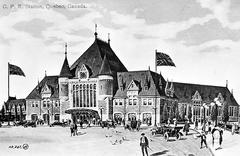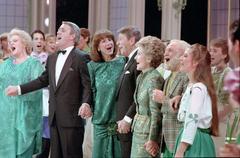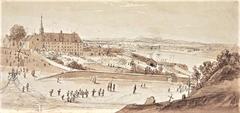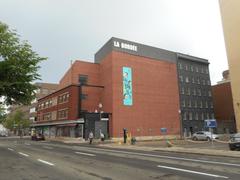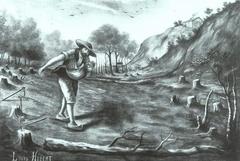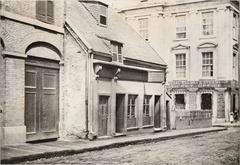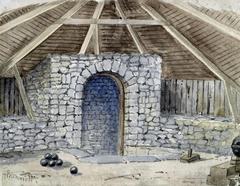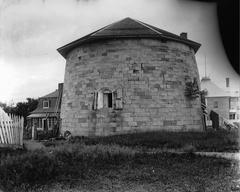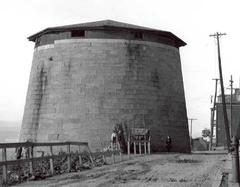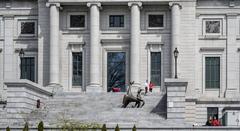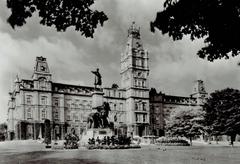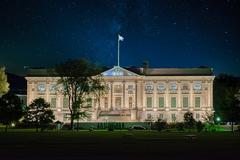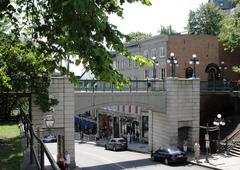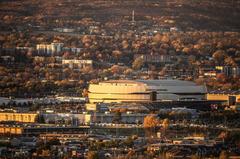Villa Beauvoir Visiting Hours, Tickets, and Guide to Quebec City Historical Sites
Date: 03/07/2025
Introduction
Villa Beauvoir, situated in Quebec City’s heritage-rich Sillery district, offers a captivating glimpse into the city’s multi-layered history and architectural evolution. While the villa is a private residence, its striking exterior, location on the historic chemin Saint-Louis, and proximity to significant heritage sites make it an essential stop for visitors interested in Quebec’s cultural tapestry. This comprehensive guide consolidates Villa Beauvoir’s historical significance, architectural highlights, visitor access protocols, travel tips, and nearby attractions to help you plan a rewarding exploration of Quebec City’s storied past. For up-to-date information, consult the Ville de Québec heritage page and the Quebec City tourism website.
Table of Contents
- Origins and Early History
- Architectural Significance
- Visitor Information: Hours, Tickets, Accessibility
- Travel Tips and Nearby Attractions
- Preservation and Heritage Status
- Cultural Insights and Visitor Experience
- Frequently Asked Questions (FAQ)
- Summary and Planning Tips
- References and Further Reading
Origins and Early History
Villa Beauvoir stands as a testament to centuries of local heritage. Its location on chemin Saint-Louis—a significant historic route—places it at the crossroads of Quebec City’s colonial, Indigenous, and religious narratives. The region was originally inhabited by Indigenous peoples, with archaeological discoveries such as the 1854 unearthing of an ancient cemetery at “la Butte aux Sauvages” underscoring the area’s deep-rooted significance (Ville de Québec).
In the colonial era, the land formed part of the Jesuit missions and agricultural domains that defined Sillery. After the British conquest in 1763, estates along the St. Lawrence River became property of British landowners, evolving into prestigious residential zones for Quebec’s elite (Sillery Heritage Site). Notably, in 1867, timber merchant Richard Reid Dobell expanded the estate, shaping much of what is now the Platon plateau.
The Marist Fathers (Société de Marie) acquired the estate in 1929, establishing a juniorate and leaving an important educational legacy in the district. Later, the 1970s saw the addition of modernist homes along Avenue du Parc-Beauvoir, designed by architects like Jacques Racicot and Zbigniew Jarnuszkiewicz, blending heritage with contemporary styles (Ville de Québec).
Architectural Significance
Villa Beauvoir exemplifies the adaptation of European styles to the Quebecois context. Its steeply pitched roofs, brick or stone masonry, and symmetrical facades are reminiscent of 17th- and 18th-century Normandy homes, reinterpreted for local climate and materials (Architecture of Quebec City). Interior photographs reveal refined woodwork and spacious, light-filled layouts (Villa Beauvoir Interior Photo).
The villa’s coordinates (46°46’11.622”N, 71°15’39.373”W) place it in a historically affluent area, further emphasizing its architectural and social prominence. Surrounding modernist residences, developed in the 1970s, add another layer of interest with their open plans, expansive windows, and seamless integration with the natural environment.
Visitor Information: Hours, Tickets, Accessibility
Villa Beauvoir is a private residence and does not offer public interior access or regular guided tours. However, visitors are welcome to view the exterior and explore the historic environs as part of self-guided or organized heritage walks along chemin Saint-Louis and Avenue du Parc-Beauvoir.
- Visiting Hours: The exterior and interpretive panels can be viewed year-round during daylight hours.
- Admission: There are no tickets or entrance fees for external viewing.
- Accessibility: The area features sloped terrain and wooded paths; comfortable footwear is recommended. Some sections may be challenging for visitors with mobility limitations.
For occasional special events or heritage walks that include Villa Beauvoir, check with the Société d’histoire de Sillery or local tourism offices.
Travel Tips and Nearby Attractions
Getting There:
Villa Beauvoir is accessible by public transit or by foot from Old Quebec. Parking in the Sillery district is limited, so plan accordingly.
Nearby Attractions:
- Old Quebec (Vieux-Québec): A UNESCO World Heritage Site with cobblestone streets and historic architecture.
- The Citadel: A star-shaped fortress offering tours and city views.
- Château Frontenac: Quebec’s iconic hotel and landmark.
- Sillery Heritage Site: Over 350 historic buildings along the St. Lawrence River (Sillery Heritage Site).
- Saint-Michel de Sillery Church: A local religious landmark.
- Montmorency Falls: A scenic drive for nature enthusiasts.
Visitor Tips:
- Wear comfortable shoes for walking tours.
- Bring a camera; the villa and area offer excellent photo opportunities.
- Check local events calendars for heritage festivals or guided walks (Québec City Events).
Preservation and Heritage Status
Quebec City places high value on the conservation of its historic architecture. Villa Beauvoir and the Sillery district benefit from municipal protections and incentives supporting restoration and maintenance (Ville de Québec – Rôle d’évaluation foncière). Preservation efforts reflect the community’s dedication to safeguarding its architectural and cultural legacy.
Cultural Insights and Visitor Experience
Although interior access is not available, Villa Beauvoir’s exterior, setting, and interpretive panels provide a window into Quebec’s elite lifestyles and layered history. Walking along chemin Saint-Louis enables visitors to appreciate the blend of heritage and modernity that defines Quebec City. Participating in heritage walks or local events can enrich your understanding of the area’s significance.
Frequently Asked Questions (FAQ)
Q: Is Villa Beauvoir open to the public?
A: No, Villa Beauvoir is a private residence; only the exterior may be viewed.
Q: Are there tours of Villa Beauvoir?
A: Regular tours are not available, but some heritage walks may include the villa’s exterior.
Q: What are the best months to visit?
A: Spring through early fall is ideal for walking tours and outdoor exploration.
Q: Is the area accessible for those with limited mobility?
A: Some terrain is sloped and may be challenging; inquire with local organizations about accessibility.
Q: What else can I see nearby?
A: Old Quebec, Château Frontenac, the Citadel, and Sillery Heritage Site are within easy reach.
Summary and Planning Tips
Villa Beauvoir is an emblematic site reflecting Quebec City’s layered history—from its Indigenous roots and colonial Jesuit past to its emergence as an architectural landmark. While the villa itself is not open for interior visits, its presence along chemin Saint-Louis and within the Sillery Heritage Site invites exploration through heritage walks and interpretive installations. The surrounding district’s modernist homes and scenic views of the St. Lawrence River further enhance the visitor experience.
Key tips for planning your visit:
- Enjoy self-guided walks and take advantage of interpretive signage.
- Integrate Villa Beauvoir into broader tours of the Sillery Heritage Site and Old Quebec.
- Use public transit or pedestrian routes, as parking is limited.
- Consult local tourism sites or the Société d’histoire de Sillery for updates on events or guided walks.
For curated heritage tours and insider tips, consider downloading the Audiala app and follow Quebec City’s cultural platforms.
References and Further Reading
- Architecture of Quebec City
- Ville de Québec – Parc Beauvoir and Sillery Heritage
- Sillery Heritage Site
- Villa Beauvoir Interior Photo
- Ville de Québec – Rôle d’évaluation foncière
- Québec City Events
- Official Quebec City Tourism Website
- Villa Beauvoir Official Page



